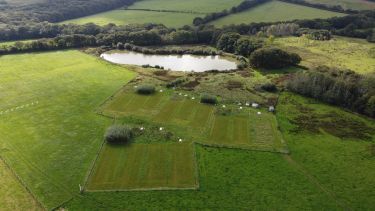Field sites for GGR by UK agriculture via ERW
We have three field sites: Plynlimon in mid Wales, North Wyke in Devon, and Harpenden in Hertfordshire.

These field sites are representative of large areas of UK agricultural land: typically they are sheep-grazed acidic upland grassland, lowland grazing, and farmland for intensive arable crops such as winter beans, winter wheat and winter oilseed rape.
By combining experiments in the field with targeted laboratory experiments, we’re investigating the environmental processes that govern ERW, including the associated benefits and risks.
Over multiple growing seasons on the field sites, our aims are to:
- investigate how effective crushed basalt is at removing greenhouse gas, by measuring carbon dioxide removal through alkalinity generation and carbonate formation
- measure greenhouse gas rates in the soils
- understand how alkalinity in the water system is affected, through water sampling downstream of our field sites
- quantify the benefits of ERW on farmland productivity (both crops and grassland) and soil quality, by looking at pH, cation exchange capacity, silica pools available to plants, and soil organic carbon
- examine what other elements are released into the environment by spreading crushed basalt rock. For example, how dissolved basalt might affect the quality of drainage water, what elements might gather in soils and plants, and whether they accumulate in any grassland species.
Our field sites form half of the picture and will provide the data for our work package, Measuring weathering rates, CO2 removal and storage.
Research goals of our field sites
We want to move enhanced rock weathering up in ‘technology readiness level’ (TRL) so it’s as close as possible for widescale rollout as a carbon dioxide removal method to combat climate change. As an essential step for moving up TRLs, the field research design combines technology demonstration supported by hypothesis-driven applied research to gain mechanistic insight into the environmental processes that govern ERW, its co-benefits and risks.
More details on our three field sites
Read more about what we're measuring, and how, on these pages:
